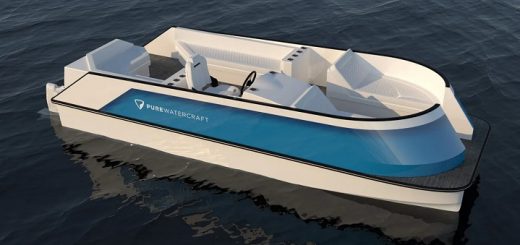 After 3 years of collaboration, NASA and GM recently unveiled the result in Houston: Robonaut 2. The humanoid robot, comically nicknamed R2, is lauded for its precision. It comes nearly a decade after Robonaut 1, a joint effort between NASA and the Defense Advanced Research Projects Agency (DARPA).
After 3 years of collaboration, NASA and GM recently unveiled the result in Houston: Robonaut 2. The humanoid robot, comically nicknamed R2, is lauded for its precision. It comes nearly a decade after Robonaut 1, a joint effort between NASA and the Defense Advanced Research Projects Agency (DARPA).
With help from Oceaneering Space Systems, a Houston-based spacesuit supplier for the US space program, GM and NASA have declared Robonaut 2 “faster, more dexterous and more technologically advanced” than predecessors of all sorts. Version 2 is capable of not only holding, but also lifting 20 pounds in each arm, four times more weight than previous humanoid robots were capable of, according to NASA. The robot also comes equipped with opposable thumbs. Engineers often appealed to human analogs to solve flexibility problems with packaging constraints, although even they had to admit that they could not beat the human thumb in efficiency.
The name, a combination of ‘robot,’ and ‘astronaut,’ perhaps conceals the great potential the machine has for The General. Robonaut 2 strongly resembles the human form from the waist up. Below that, a variety of propulsion systems, from legs, to wheels, to a single leg have been considered. Deployed on a GM assembly line where the mobility requirements are far less, Robonaut 2s might simply be anchored to a base. But what really sets them apart is that they fit in the same space that humans do, and can work side-by-side with humans.
Current robots are unaware of nearby humans. With current robots, GM has to spend more on safety systems to protect surrounding workers than on the robots proper. By contrast, the far less massive Robonaut 2’s components carry much less momentum and therefore pack a much smaller punch should they contact a human. Sensors throughout are designed to prevent accidentally striking a human. Summarizing the vision, GM Vice President for Global Research and Development Alan Taub said:
For GM, this is about safer cars and safer plants. When it comes to future vehicles, the advancements in controls, sensors and vision technology can be used to develop advanced vehicle safety systems. The partnership’s vision is to explore advanced robots working together in harmony with people, building better, higher quality vehicles in a safer, more competitive manufacturing environment.
Mike Coats, director of the Johnson Center, echoed the possibilities the technology opens for NASA:
Our challenge today is to build machines that can help humans work and explore in space. Working side by side with humans, or going where the risks are too great for people, machines like Robonaut will expand our capability for construction and discovery.
But GM is more than just a beneficiary. Ron Diftler, NASA’s Robonaut project manager acknowledged GM’s contribution, noting:
We have a better Robonaut as a result of working with GM.
NASA’s proposed use for Robonaut 2 includes sending data back in advance of human arrival at extra terrestrial sites like the Moon.
While not involved with the DARPA/NASA-sourced Robonaut 1, GM has a long history of collaboration with NASA. The General built the navigation systems used in the Apollo mission, and was heavily involved in the production of the Lunar Rover. It is ironic that the latest product of collaboration with the government agency comes at a time when that same government owns a majority stake in the company. Moreover, the Obama administration recently announced a shift toward private space exploration. Many observers believe that this collaboration with the pseudo-private GM provides a model for how space exploration of the future will be funded. That said, the situation still seems a bit murky to draw any concrete inferences.
And those are not the only reasons Robonaut 2’s debut comes at an interesting time. Some commentators note that GM’s enthusiasm in using Robonaut 2 on production lines derives from the fact that the machine could lower costs, but also the requirement for human labor. In response, GM representatives pointed to the technologies that allow the robot to work with, not in place of, humans. Both NASA and GM were grappling with how autonomous they should strive to make the robot in their respective implementations. For now, it appears Robonaut 2 will not displace too many workers at GM.
[Sources: USA Today, CNET once and twice, MSNBC, Detroit Free Press, Computer World, The Register, NASA]













No Comments yet